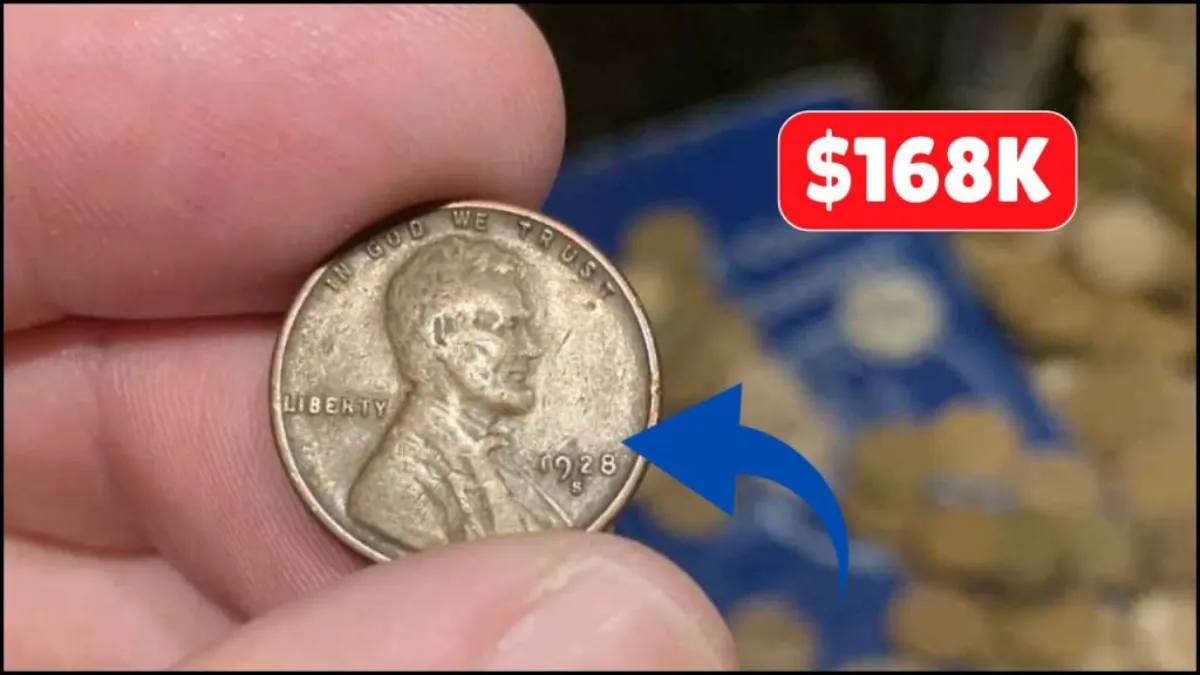Imagine pulling a penny out of your pocket and realizing it’s worth more than a luxury car—or even a house. Sounds unbelievable, right? But one Lincoln Wheat Penny has been valued at an incredible $168,000. And the most surprising part? It could still be out there, sitting in someone’s coin jar or quietly changing hands every day.
Let’s take a closer look at the fascinating story behind this small coin with a massive value—and how you might be lucky enough to find one yourself.
A Penny with a Rich History
The Lincoln Wheat Penny was first introduced in 1909 to celebrate 100 years since Abraham Lincoln’s birth. It became the first U.S. coin to feature an actual president, breaking the tradition of using symbols like Lady Liberty.
The coin was designed by Victor David Brenner. The front shows Lincoln’s portrait, while the back has two wheat stalks on either side of the words “ONE CENT” and “UNITED STATES OF AMERICA.” That’s why collectors call it the “Wheat Penny.” This design remained until 1958, after which it was replaced by the Lincoln Memorial version.
Why Is This Penny So Valuable?
Most pennies are worth just one cent. So what makes one Lincoln Wheat Penny worth up to $168,000? Here are three key reasons:
1. Rarity
Some pennies are extremely rare due to limited production. The 1909-S VDB (made in San Francisco with the designer’s initials) is a great example. Other valuable ones include the 1914-D from Denver and the 1922 “No D” penny, which lacks a mint mark because of a striking error.
2. Condition
Collectors look for coins in excellent shape. A penny that appears almost new—without scratches or wear—can be worth far more. These coins are graded based on luster, detail, and overall appearance. A coin in top condition could easily hit six figures.
3. Mint Errors
Coins with production mistakes—like double stamping or missing letters—can be very rare. These unique flaws often increase a coin’s value dramatically.
Could You Find One?
The exciting part is—yes, it’s possible! These valuable pennies sometimes reappear in everyday circulation. Many were used regularly back in the day and later tucked away in jars or drawers or passed down through families. If they’re unknowingly spent, they might end up in someone’s pocket change again.
You might be holding a treasure without even realizing it.
What Should You Look For?
Here’s how to increase your chances of finding a rare penny:
Valuable Dates to Watch
Keep an eye out for these specific years:
1909-S VDB
1914-D
1922 “No D”
1931-S
Any pre-1959 penny with strong details
Check Mint Marks
Just below the date on the coin, look for:
“D” for Denver
“S” for San Francisco
No letter means it was made in Philadelphia.
Some combinations of dates and mint marks are much rarer than others.
Examine the Condition
Even a rare coin won’t fetch a high price if it’s in poor shape. Look for coins that are clean, have sharp edges, and keep their original reddish tint. And don’t clean them—cleaning can actually lower their value.
Spot Unusual Features
Strange markings, missing letters, or designs that are off-center could mean a mint error—something collectors are willing to pay big money for.
Real-Life Finds
You don’t need to be a seasoned collector to discover a valuable penny. People all over the world have found rare coins in old piggy banks, family collections, or loose change after shopping.
Coin collecting—also known as numismatics—has grown into a popular and rewarding hobby. It’s fun, educational, and sometimes surprisingly profitable. All you need is a curious eye and maybe a magnifying glass.
Why It Matters
The story of a $168,000 penny does more than spark curiosity—it connects people to history. Each old coin has its own tale. It’s a small piece of the past, a bit of art, and possibly a hidden treasure.
Coin collecting helps save these pieces of history from being forgotten or discarded. The more people participate, the more historical coins are preserved for the future.
Final Thoughts
It’s amazing to think a tiny penny—often ignored or left on sidewalks—could be worth thousands of dollars. But stories like the Lincoln Wheat Penny prove it’s true.
So next time you get some change, take a minute to look through those coins. That little copper piece in your hand could be the key to a life-changing discovery.
